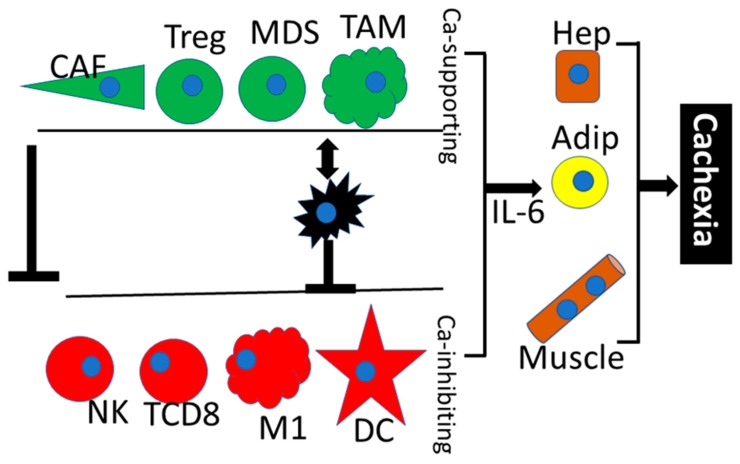Figure 1.
The cancer ecosystem. This figure shows the interaction between cancer cells (black), cancer growth-supporting cells (green) such as cancer-associated fibroblasts (CAF), T-regulatory lymphocytes (Treg), myeloid-derived suppressors (MDS), tumour-associated macrophages (TAM) and cancer growth-inhibiting cells (red) such as natural killer (NK) cells CD8+T lymphocytes, M1 macrophages and dendritic cells (DC). The activity of the cells with anti-cancer effect is inhibited both by cancer cells and by cancer-stimulating cells. At an advanced stage of the disease, the entire cancer ecosystem controls the metabolism of the patient mainly through hepatocytes (Hep), adipocytes (Adip) and striated muscle cells (Muscle) by production of factors such as IL-6 that induce failure of the organism and cachexia.

